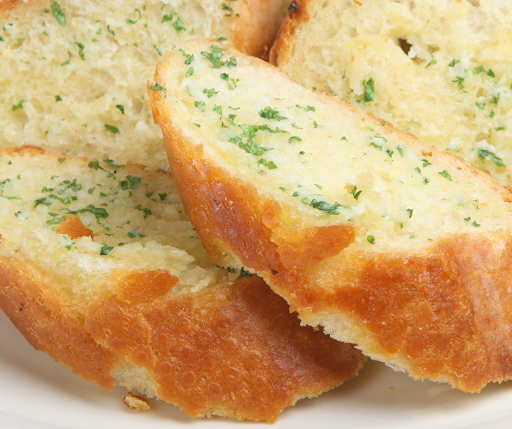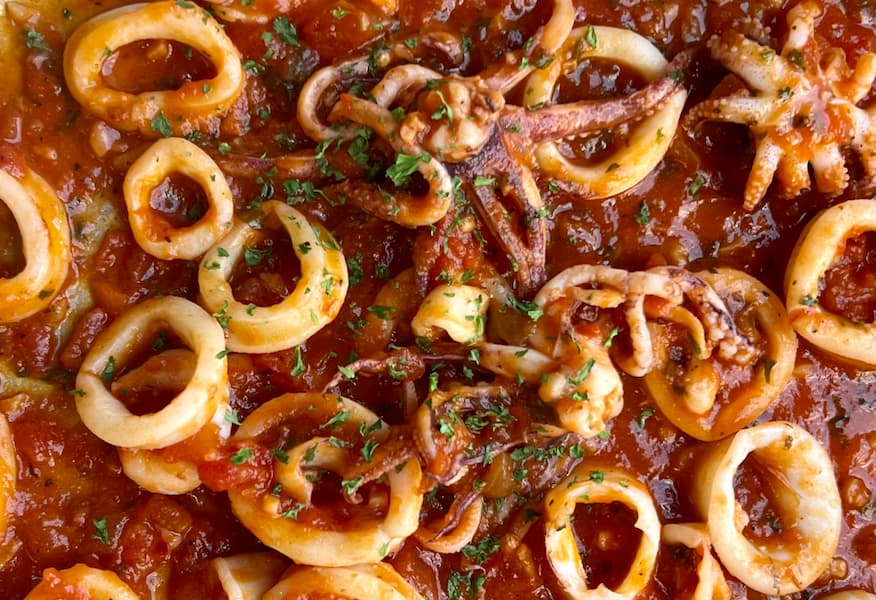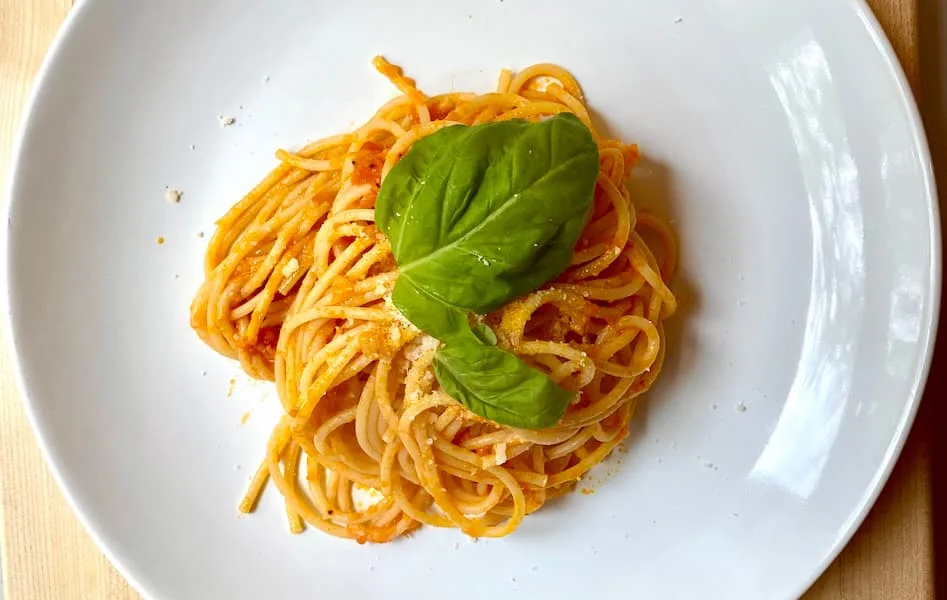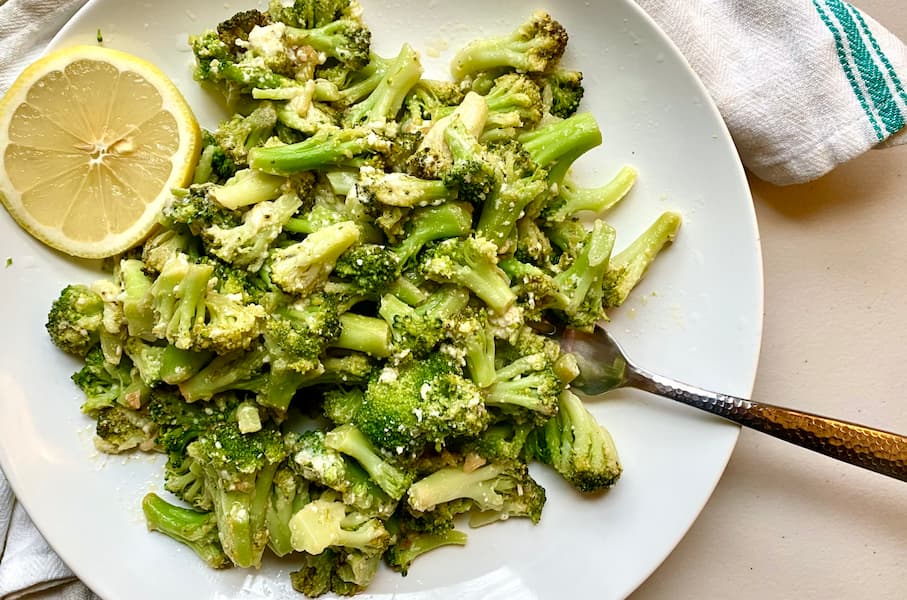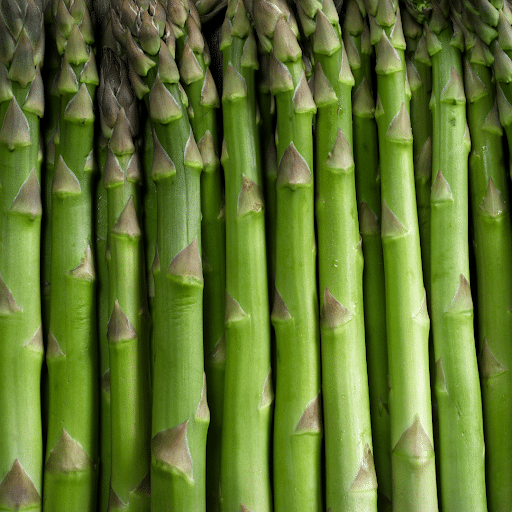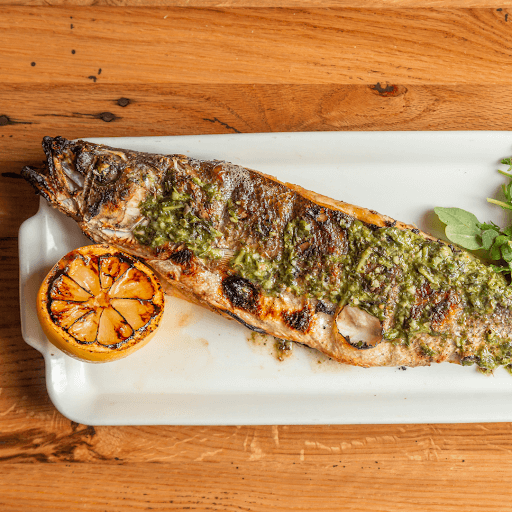It’s not always easy to find time to make homemade bread. But if you can manage to, it’s so fun to do! If you want to give it a try or are looking for some new recipes, I’ve got an easy one for you. Let’s make this Italian herb bread recipe together!
What you’ll need
All-purpose Flour: I use a bread flour that they sell at my favorite bakery, but all-purpose flour will do as well.
Room temperature water: While many online posts recommend using warm water at a temperature of 105 to 110° F, I usually keep it between 78° F and 82° F. The reason is that, while higher temperatures may speed up the rising process, they will also make the dough less digestible. Better to wait a little longer and enjoy good quality bread, right?
Active dry yeast: or fresh yeast, if you prefer. I’ll put the exact amount in the recipe card at the end of the post. If you want to know more, here’s a good article about the different types of yeast and their use.
Salt: all the other regions of Italy make fun of Le Marche for not adding salt to our bread dough. And although I like our local bread, I see their point. Don’t make the same mistake as us. Add some fine salt, and enjoy your savory bread. 😀
Sugar: just a dash to dissolve in water with the yeast at the beginning of our process.
Italian herbs: you can use a classic Italian seasoning, or make your own mix of fresh herbs. I usually go with parsley, sage, thyme, and a little bit of oregano, but you can also add basil, rosemary, mint, and many others. You can also add a sprinkle of ground black pepper or garlic powder.
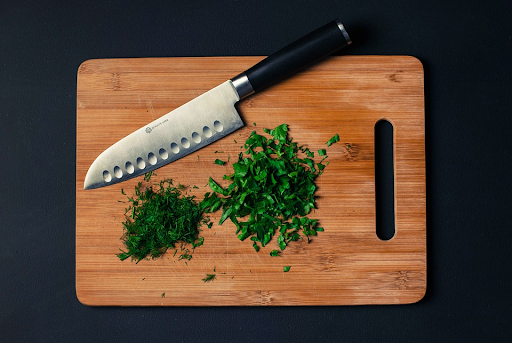
As you can see, it’s a very simple recipe. I’ll list the exact amount for each ingredient in the recipe card at the end of the post. However, the scheme that I like to stick to is the following:
- Water: 75% of the amount of flour used;
- Salt: 30 g/Kg;
- Active dry yeast: 8 g/Kg.
I use these measurements any time I make bread or pizza dough. So, for 500 grams of flour, I used 325 ml water, 4 grams of yeast, and 15 grams of salt. If you prefer to measure them in cups and tbsp, don’t worry, I’ll write the right conversion in the recipe card.
You will also need a stand mixer with a dough hook attachment, and a clean working surface.
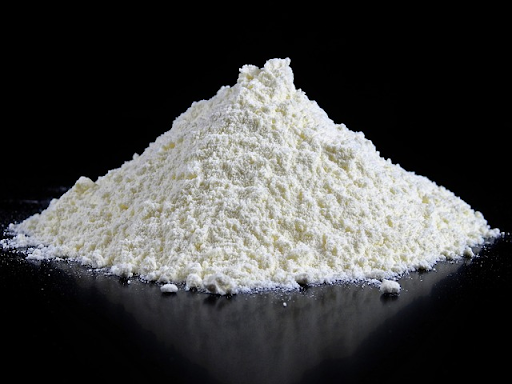
Optional ingredients
Many people like to add butter, olive oil, milk, or egg yolks to their bread dough. All these ingredients can add their own flavor and make your herb bread softer and more elastic.
However, I think it’s better to start with the basics, and then make your own experiments. Use this recipe as a starting point. Besides, it takes less time and money than
You can also add vital wheat gluten to give more structure and stability to the dough. This is especially helpful for bread recipes with whole wheat flour. If you like to use it, the recommended ratio is 1 tablespoon per 2 cups of flour.
If you like dairy, you can also add some grated parmesan cheese and shredded Monterey Jack on top of the dough right before baking. This way, you can make a homemade replica of Subway’s Italian herb and cheese bread. On the other hand, if you’re more of a healthy-eating person, try doing the same with sesame seeds.
Method
Preparation: First, put the water in a small bowl and check that it is at the right temperature. If it is, dissolve the yeast and sugar in it, and leave them there for at least 10 minutes. In the meantime, mince the fresh herbs fine with a sharp knife.
After that, put the flour and any optional dry ingredients in a stand mixer, and operate the dough hook at slow speed, adding the water and yeast mixture a little at a time. After about a minute, raise the speed slightly to medium and let the machine knead for at least another 9 minutes.
Halfway through the process, add the salt and the herbs. Many people add them only before baking, but I like them to be homogenous in my bread.
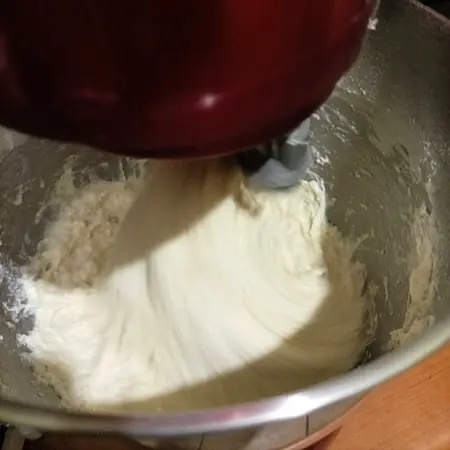
First rise: Transfer the resulting dough ball to a lightly floured surface. Fold it over itself a couple of times, then place it in a large bowl and cover it with plastic wrap, or a kitchen towel. Let the dough rise for about 2 hours.
Kneading: When the two hours have passed, put a little extra flour on the work surface, and return the dough ball there. Now it is time to knead it to give it more strength.
I use a two-fold system. I take one end and fold it to the center of the ball. Then I take the other end and fold it over the other one. Finally, I turn the dough ball over and repeat.
Second rise: Now, divide the ball into 2 or 3 pieces depending on how big you like your bread loaves, and arrange them on top of a baking sheet previously covered with parchment paper. Cover them with a kitchen cloth and let them rise in the unlit oven or in a warm place for another two hours. When you take them out, start preheating the oven to 430° F, static mode, and place an empty oven-proof dish at the bottom.
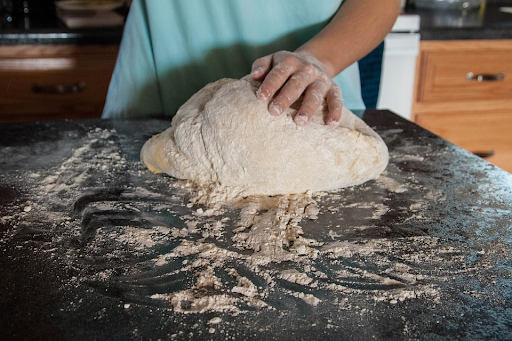
Baking: When the oven reaches the right temperature, fill the empty bowl with half a cup of water, then add the baking dish with the bread dough. The steam will create a moist environment that will prevent the bread crust from drying out too soon, thus making it crispier and giving it a nice golden brown color.
Bake for 20-25 minutes. Each oven may require slightly different baking times, but the important thing is not to open it for at least 15 minutes.
Your aromatic bread is ready. You can enjoy it as soon as it cools off, or you can wrap it in paper and store it in a closed staple for 3-4 days.
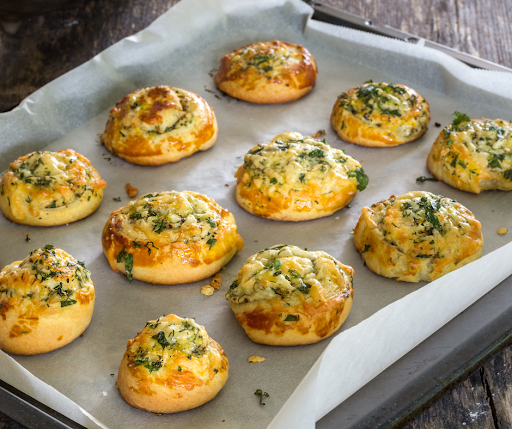
Italian Herb Bread FAQs
Q: Can I use instant yeast?
A: I think this recipe works best with active dry yeast. However, you can check the article I linked in the paragraph about ingredients to see how to switch between different types of yeast and make your own experiments.
Q: Can I reduce the rising time?
A: You can reduce the first rising phase to 1 hour, and the second one to 40 minutes, but the result will probably be less digestible. I prefer to wait. After all, you don’t need to be around the dough while it rises. The time you’ll spend actively working on this recipe is about 30 minutes.
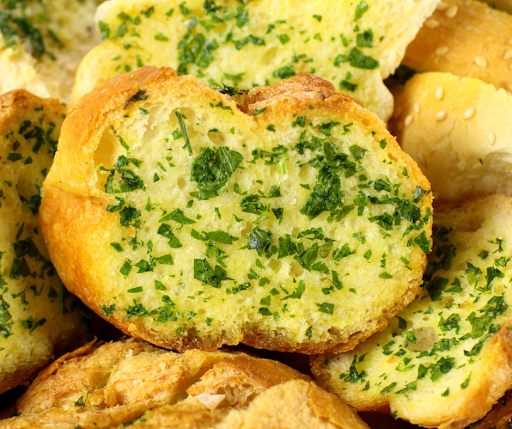
Conclusion
That’s how to craft your own Italian herb bread using just a bunch of simple ingredients. By combining water, dry yeast, salt, all-purpose flour, and a selection of fresh Italian herbs of your choice, you’ll unlock a world of flavors. Have fun experimenting with different seasoning mixes and adding new ingredients as you improve.
To ensure you have this recipe at your fingertips whenever the craving strikes, here’s the usual recipe card. It’s a quick reference guide that you can print out or save for future baking sessions.
I would love to hear your feedback on this Italian herb bread recipe. If you found it as enjoyable as I did, I kindly invite you to leave a five-star rating on the recipe card. Your positive review will help others discover this delightful bread and encourage them to try it themselves.
I’d also like to read your thoughts and experiences in the comments section below. Did you experiment with different herb combinations? How did your loaf turn out? I’m eager to hear your stories and tips.
Now, let’s savor the aroma of fresh herbs and the satisfaction of a homemade Italian herb bread. Happy baking!
Print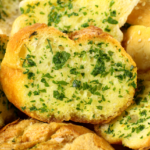
Italian Herb Bread Recipe
- Author: Mortadella Head
- Total Time: 1 hour
- Yield: 2-3 thick bread buns 1x
Ingredients
- 4 + 1/6 cups bread flour (500 g)
- 11 fl oz water (325 ml)
- 2 + 1/2 tsp salt (15 g)
- 1 + 1/3 tsp active dry yeast (4 g)
- 1/2 tsp sugar
- fresh Italian herbs to taste (I use a mix of fresh parsley, thyme, oregano and sage, but feel free to add what you like)
Optional Ingredients:
- Parmesan and shredded Monterey Jack cheese to taste
- a little extra-virgin olive oil
Necessary tools:
- a stand mixer with a dough hook attachment
- a working station or large cutting board
Instructions
- Prepare the yeast mixture: check water temperature and dissolve yeast and sugar in it, then let it sit for 10 minutes. In the mean time, mince the fresh herbs with a sharp knife.
- Add the flour and optional dry ingredients to the bowl of a stand mixer equipped with a dough hook attachment. Start kneading at low speed, and slowly add the water and yeast mixture, while gradually increasing the speed to medium-high. Keep kneading for about 9 minutes.
- Halfway through the process, add the salt and minced herbs. If you want, add a little olive oil to make the bread dough more elastic.
- Now it’s time for the first rise. Transfer the dough to a floured surface. Fold it over a few times and place in a covered bowl, then let it rise for 2 hours.
- Return the dough to the floured surface and knead with your hands to strengthen. Fold and repeat the process.
- Second rise: divide the dough into 2 or 3 pieces and place it on a parchment-lined baking sheet. Cover with a cloth and let rise for 2 hours in a warm place, like an unlit oven.
- Preheat oven to 430°F (220°C) with an empty oven-proof dish at the bottom.
- Fill the empty dish with water for best results. This way, you’ll create a moist environment that will prevent the bread crust from drying out too soon, thus making your bread crispier and with a softer inside.
- Place the dough in the oven and bake for 20-25 minutes without opening. If you want, you can add the optional cheeses on top of the loaf right before starting to bake.
- Let the bread cool before serving, then enjoy immediately or wrap it in paper and store for 3-4 days in a closed staple.
- Happy baking!
Notes
Disclaimer: The nutritional information provided for this recipe is only an estimate generated with VeryWellFit’s online calculator. The accuracy of the nutrition facts listed is not and cannot be guaranteed. If you need this information for health-related reasons, we recommend making your own research with tools that you trust, or asking your doctor.
- Prep Time: 35 mins
- Cook Time: 25 mins
- Category: Bread
- Method: Baking
- Cuisine: Italian
Nutrition
- Serving Size: 100 g
- Calories: 233
- Sugar: 0.5 g
- Sodium: 736 mg
- Fat: 0.7 g
- Saturated Fat: 0.1 g
- Carbohydrates: 48.6 g
- Fiber: 2.1 g
- Protein: 6.9 g
- Cholesterol: 0 mg

